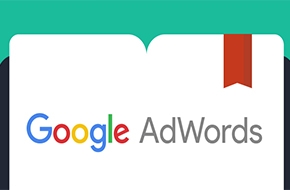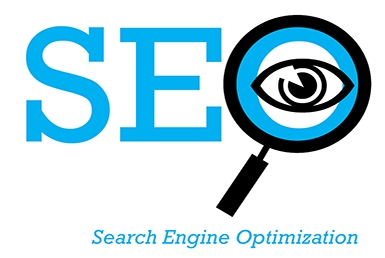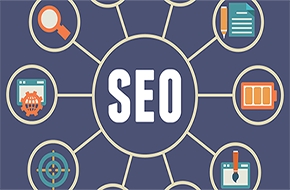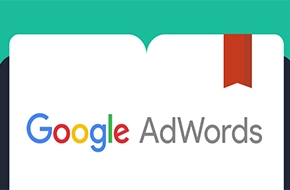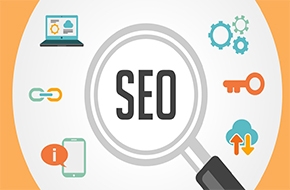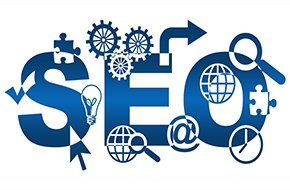IT Supporter 1
Hướng dẫn cài đặt tài khoản Google AdWords
Trước khi bắt đầu, doanh nghiệp nên tự đặt ra một số câu hỏi để chắc chắn rằng mình đã sẵn sàng để tạo một tài khoản Google Account.
Doanh nghiệp đã có sẵn một trang web hấp dẫn, thu hút người xem hay chưa? Quảng cáo Google AdWords là một công cụ tuyệt vời để dẫn dắt người xem vào trang web, nhưng như vậy chưa đủ. Để giữ chân người xem vào trang web và thúc đẩy họ thực hiện các thao tác khác (nhấn vào các link khác để tìm hiểu thêm thông tin, giao dịch, mua bán vv), trang web của doanh nghiệp phải có thiết kế hấp dẫn, giao diện trực quan và cho phép người xem dễ dàng tìm thấy những thông tin cần thiết mà họ đang tìm kiếm. Hãy chắc chắn rằng doanh nghiệp đã sở hữu một trang web thật chất lượng trước khi thiết lập bất kỳ tài khoản PPC (Pay Per Click-Trả tiền theo click) nào.
Doanh nghiệp đã vạch ra chiến lược quảng cáo PPC chưa? Nếu chưa, doanh nghiệp phải nghiên cứu để lập một chiến lược PPC và phải có mục tiêu rõ ràng trước khi bắt đầu thiết lập một tài khoản AdWords.
Doanh nghiệp đã sẵn sàng để chạy quảng cáo PPC chưa? Đa số khách hàng thành công với quảng cáo Google AdWords, họ dùng ngân sách ít nhất là từ $500 cho đến hơn $100.000 mỗi tháng.Cho dù ngân sách dành cho Adwords là bao nhiêu đi nữa, để đạt được thành công doanh nghiệp nên xem quảng cáo PPC là một phần không thể thiếu trong chiến lược tiếp thị. Doanh nghiệp nên thử chạy tài khoản trong vòng 3 tháng để có thể thực sự nhìn thấy được tiềm năng mà quảng cáo AdWords đem lại.
Nếu đã có câu trả lời cho ba câu hỏi trên, doanh nghiệp đã sẵn sàng để tạo tài khoản và bắt đầu chạy quảng cáo Google AdWords!
![]() 3 bước để Thiết lập một tài khoản AdWords
3 bước để Thiết lập một tài khoản AdWords
Bước 1: Tạo tài khoản Google:
Truy cập vào trang www.adwords.google.com để thiết lập tài khoản Google Adwords. Khi tạo một tài khoản, có thể dùng tùy chọn để tạo tài khoản với tài khoản Gmail hiện tại hoặc thiết lập một tài khoản mới. Doanh nghiệp có thể cân nhắc việc thiết lập một tài khoản Gmail mới chỉ sử dụng cho quản lý AdWords. Với một email riêng quản lý, doanh nghiệp sẽ tránh được việc nhận quá nhiều email từ Google Adwords đến email cá nhân hay công việc của mình.

Bước 2: Thiết lập múi giờ và tiền tệ:
Sau khi tài khoản đã được thiết lập, hoàn thành một vài mục cần thiết như thiết lập thời gian và tiền tệ:
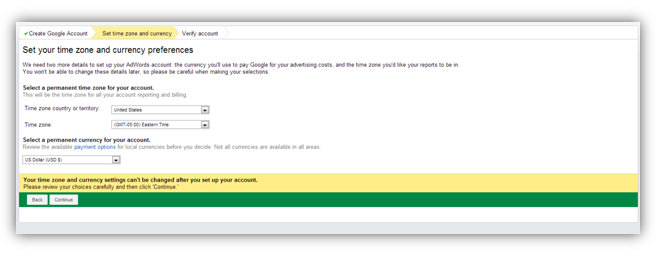
Bước 3: Xác minh tài khoản:
Ở bước này,Google sẽ nhắc nhở thiết lập các thông tin thanh toán. Với AdWords, có hai hình thức thanh toán. Thanh toán tự động cho phép thanh toán sau khi các clicks của người xem được tích lũy. Doanh nghiệp sẽ phải thanh toán khi đến hạn hoặc 30 ngày kể từ ngày thanh toán cuối cùng. Nếu lựa chọn thanh toán thủ công, doanh nghiệp sẽ trả trước cho AdWords và các khoản phí sẽ được trừ vào số tiền trả trước. Khi dư trả trước đã giảm đi, tất cả các quảng cáo sẽ tạm dừng cho đến khi doanh nghiệp thực hiện thanh toán khác.
Hoặc doanh nghiệp có thể chọn thanh toán bằng thẻ tín dụng hoặc tài khoản ngân hàng. Lưu ý rằng Google phải mất một khoản thời gian để xác minh tài khoản ngân hàng. Nếu doanh nghiệp mong muốn chạy quảng cáo ngay thì nên dùng thẻ tín dụng.
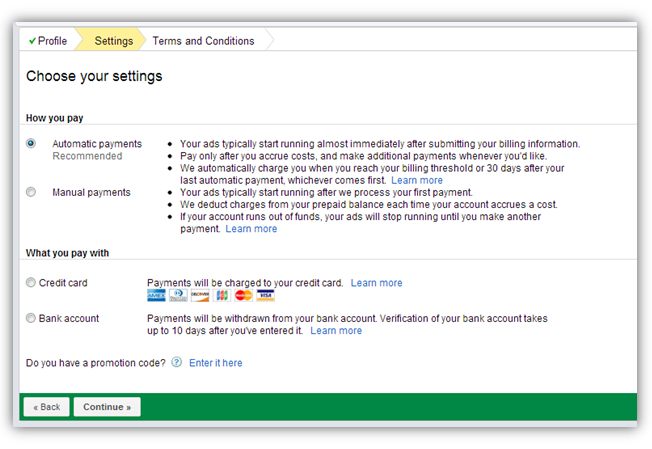
Bước 4: Theo dõi hiệu suất:
Bước cuối cùng để thiết lập tài khoản AdWords là đặt mã theo dõi conversion (các thao tác chuyển đổi, thực hiện giao dịch của người dùng). Theo dõi conversion là khi một cookie được lưu lại trên máy tính của người dùng, sẽ có một kết nối được tạo ra liên kết đến Google, sau đó Google sẽ tín dụng tài khoản của doanh nghiệp với mỗi conversion thành công. Các thao tác sau sẽ được xem như là các conversions: mua hàng, sign-up (đăng ký), lượ xem trang hoặc lead (thông tin người dùng để lại trên trang). Để xem các conversion thành công trong AdWords, nhấp vào tab Chiến dịch (Campaigns) hoặc click vào tab Báo cáo và công cụ (Reporting and Tools) và chọn “Conversions” (Chuyển đổi).
Dưới đây là các bước để tạo và đặt đoạn mã conversion:
Click vào tab Báo cáo và công cụ (Reporting and Tools)> Conversions (Chuyển đổi)
Các mã được cung cấp ở dưới cùng của màn hình. Không có hệ thống nào yêu cầu mã này được đặt trên trang web. Để Google theo dõi những conversions đúng cách, người tìm kiếm thông tin phải thiết lập chức năng tải được hình ảnh cũng như có bật cookie trên máy tính của họ.
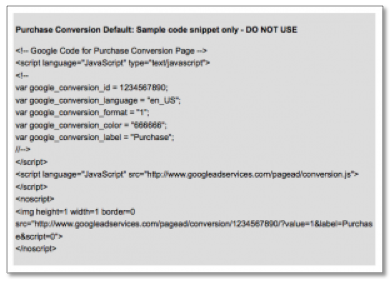
Tiến hành sao chép và dán mã chuyển đổi (conversion code) vào các trang conversion liên quan đến trang web. Đoạn mã nên được đặt giữa các thẻ <body> và không có trong header hoặc footer trong đoạn code.
![]() Như vậy là đã hoàn thành thiết lập tài khoản Google AdWords! Doanh nghiệp đã có thể chạy quảng cáo và bắt đầu xây dựng các chiến dịch quảng cáo. Tuy nhiên, hành trình không kết thúc ở đây ... có rất nhiều điều doanh nghiệp cần phải làm trên tài khoản Google AdWords. Doanh nghiệp nên dành thời gian cho việc nghiên cứu làm cách nào để tối ưu hóa, thử nghiệm, các chiến dịch di động, các chiến dịch hiển thị mạng lưới – lập ra danh sách công việc cần làm và thực hiện chúng với công cụ quảng cáo PPC tuyệt vời này.
Như vậy là đã hoàn thành thiết lập tài khoản Google AdWords! Doanh nghiệp đã có thể chạy quảng cáo và bắt đầu xây dựng các chiến dịch quảng cáo. Tuy nhiên, hành trình không kết thúc ở đây ... có rất nhiều điều doanh nghiệp cần phải làm trên tài khoản Google AdWords. Doanh nghiệp nên dành thời gian cho việc nghiên cứu làm cách nào để tối ưu hóa, thử nghiệm, các chiến dịch di động, các chiến dịch hiển thị mạng lưới – lập ra danh sách công việc cần làm và thực hiện chúng với công cụ quảng cáo PPC tuyệt vời này.
Chúc quý doanh nghiệp thành công!
Để được tư vấn cách thiết lập chiến dịch Google Adwords và thêm các từ khóa phủ định hợp lý cũng như các dịch vụ khác như thiết kế website responsive chuẩn SEO, quản trị website, Google Apps, SEO, Google Adwords, quý doanh nghiệp vui lòng liên hệ với chúng tôi:
Liên hệ
Qúy công ty có thể tham khảo thêm các mẫu website khác tại //globalweb.asia/vi/kho-giao-dien
Để được tư vấn chi tiết, xin vui lòng liên hệ
Công ty Global Links Asia- Tư vấn thiết kế và quản trị website chuẩn SEO
Địa chỉ: 151 Đào Duy Anh, Phú Nhuận, Thành phố Hồ Chí Minh
Hotline: (+84) 938 531 588
Email: This email address is being protected from spambots. You need JavaScript enabled to view it.
What is a SEO friendly website
Many times you have heard the term “SEO friendly” or “SEO friendly website”, but what do these terms really mean and why do your business need one? How can a SEO friendly website help your business increase competitiveness in the Internet Era?
This article is suitable with SEO beginners because we try to avoid technical terms or advanced SEO terminologies.
What does it mean by a Search Engine or SEO Friendly Website?
A SEO friendly website has those configurations and features so it’s easy for search engines to crawl (read) and understand what the particular website is all about. The most important characteristics of a SEO friendly website are:
#1 – Unique titles and Descriptions for all pages
Each page of the website (including the home page) has a unique title and description. The titles are between 60-65 characters and the descriptions are about 150 characters. Titles and descriptions describe accurately what the page is about without being keyword stuffed. Example of a good title and description:

#2 – Well formatted URLs – URLS
Permanent links (that’s the url of a webpage) are descriptive, all lower case and separated by dashes. Example of a well formatted URL:

#3- Fast loading web pages
Neither people nor search engines want websites that are slow to load. On the contrary fast loading websites are SEO friendly (meaning they have an advantage in ranking algorithms over websites that are slower) and generate more user interactions (sales, newsletter signups, contact forms submissions etc).
#4 – It has unique content
Content on the website is not found anywhere else on the web, all pages have unique and useful content. This means a website cannot be SEO friendly if it has content copied from other web sites.
#5 – Includes images that are optimized for search engines
Search engines prefer text that’s the truth, but you also need to have images to your pages because people like it, it makes your content more interesting, easier to read, sharable etc. When you do so, make sure that the images are optimized for size (tools like smushit can help you reduce image file size without losing quality) and also that you set a meaningful image filename and ALT text.
#6 – Pages have a meaningful structure
A web page usually has the following elements:
• Header• Breadcrumb menu
• Page Title (that’s the H1 tag – there is only one per page)
• Well formatted text – text is separated into a number of short paragraphs with subheadings
• Author information
• Footer
There are of course many other characteristics that make a website SEO Friendly, but the above 6 elements are currently among the most important.
Why does your business need a SEO friendly website?
Something that most CEOs, small business owners or new webmasters don’t easily understand is why you need a SEO friendly website and why make the effort to make their website friendlier to search engines. Well, the reasons are a lot but those you need to know are:
#1 – It will get you more organic traffic (that is traffic from search engines)
As expected, a SEO friendly website will get you more traffic from search engines as it is likely to run higher in the SERPS (search engine results pages). If you take into account that the majority of people who use the search box tend to select one of the first 5 results, you can understand the importance of SEO.
#2 – It will make your website user friendly
SEO is not only for search engines but good SEO is for users as well. Applying the principles of SEO to your website, will make it easier to use and this will enhance the user experience.
#3 – It gives you brand credibility
Users are more likely to trust websites (businesses) that are found in the first pages of Google, Bing or Yahoo. This is good for both brand awareness and brand credibility.
#4 – It is cost effective
A SEO website will drive targeted traffic 24×7 without needed to spend money on PPC or other forms of online advertising. While there is a cost to reach that point, the long term benefits are bigger.
#5 – It helps you understand what your most important customers want
SEO drives quality traffic and by analysing the behaviour of those users (how they enter your website, what they click, how they leave, what they like etc) is a great way to understand what your customers want and adjust your website or products to match their needs.
#6 – SEO is even more important on mobile
A website that is mobile friendly and has good rankings on mobile search can get more customers and traffic that websites that are not mobile SEO friendly. More and more users are using their mobiles to search for information or products while on the go it is important to be on top of the search results otherwise you are losing customers to competition, especially those searching for local products or services.
![]() Conclusion
Conclusion
It’s not enough these days to design a beautiful, functional website. If you truly would like to reap the benefits of having an online presence, then SEO-friendly website design is a necessity. Search Engine Optimization is a method of improving the visibility of a website in search engines through organic search results, and is now a viable online marketing tool for a lot of businesses.
If you would like to build SEO friendly websites with world class standards and most updated technologies- Fully Responsive- as well as enjoy one-stop service offered for you websites, please do not hesitate to contact us for more information and professional advice.
Besides, you may refer to our other services: website management and development, SEO-Google Adwords consulting, CRM Application to Business, Google Apps, Email marketing-Newsletter campaign, Domain and Hosting Registration.
We are truly your website master!
CONTACT US
Viet Nam office: 151 Dao Duy Anh Street, Phu Nhuan District, Ho Chi Minh City
Singapore office: 316 Tanglin Road, Block 316, Singapore
Hot line: (+84) 0938.53.15.88/ (+65) 83551210
Email: This email address is being protected from spambots. You need JavaScript enabled to view it.
Website: exporthelp.vn/en
5 bước đơn giản phát triển một chiến lược SEO hiệu quả
Với một chiến lược SEO đúng đắn, doanh nghiệp có thể đạt được nhiều năm thành công trong cuộc chiến Internet và tăng trưởng cho doanh nghiệp.
Ngày nay, hầu hết mọi người đều biết SEO là gì (tối ưu hóa công cụ tìm kiếm) và vai trò của nó trong thành công của một doanh nghiệp. Tuy nhiên, một trong những điều áp đảo và tốn nhiều thời gian về khía cạnh SEO là phát triển một chiến lược hợp lý. Sau đây là 5 bước đơn giản để giúp phát triển một chiến lược SEO hiệu quả:
Xác định đối tượng mục tiêu và các mẫu trực tuyến của họ. Đặt ra mục tiêu.
![]() Rõ ràng mục đích của SEO là để đạt thứ hạng cao trong công cụ tìm kiếm nhằm tăng lượng truy cập đến trang web của doanh nghiệp, nhưng sẽ vô nghĩa nếu trang web đó không phải là mối quan tâm của người đang xem. Điều đầu tiên luôn luôn phải làm là xác định đối tượng mục tiêu và tìm hiểu tất cả về họ - nhân khẩu học (như giới tính, độ tuổi, dân tộc, nghề nghiệp, trình độ), sở thích, thói quen tìm kiếm, vị trí địa lý, vv Một cách tốt để làm điều này là đăng nhập vào tài khoản Google Analytics và phân tích các số liệu.
Rõ ràng mục đích của SEO là để đạt thứ hạng cao trong công cụ tìm kiếm nhằm tăng lượng truy cập đến trang web của doanh nghiệp, nhưng sẽ vô nghĩa nếu trang web đó không phải là mối quan tâm của người đang xem. Điều đầu tiên luôn luôn phải làm là xác định đối tượng mục tiêu và tìm hiểu tất cả về họ - nhân khẩu học (như giới tính, độ tuổi, dân tộc, nghề nghiệp, trình độ), sở thích, thói quen tìm kiếm, vị trí địa lý, vv Một cách tốt để làm điều này là đăng nhập vào tài khoản Google Analytics và phân tích các số liệu.![]() Một khi đã xác định được đối tượng, bước tiếp theo là thiết lập mục tiêu dựa trên đối tượng đó. Doanh nghiệp muốn đối tượng mục tiêu làm gì trên trang web ? Cách tốt nhất để thực hiện điều đó dựa trên thông tin của đối tượng là gì? Nếu không có mục tiêu rõ ràng, doanh nghiệp có thể thực hiện rất nhiều công việc mà không nhận được kết quả mong muốn.
Một khi đã xác định được đối tượng, bước tiếp theo là thiết lập mục tiêu dựa trên đối tượng đó. Doanh nghiệp muốn đối tượng mục tiêu làm gì trên trang web ? Cách tốt nhất để thực hiện điều đó dựa trên thông tin của đối tượng là gì? Nếu không có mục tiêu rõ ràng, doanh nghiệp có thể thực hiện rất nhiều công việc mà không nhận được kết quả mong muốn.

Phân loại nghiên cứu từ khóa.
![]() Dựa trên sự phân tích các dạng đối tượng mà doanh nghiệp muốn nhắm mục tiêu, sau đó tiến hành nghiên cứu từ khóa. Quyết định những từ khóa nên hay không nên nhắm mục tiêu có thể tác động cả tiêu cực lẫn tích cực đến chiến lược doanh nghiệp. Tạo một bảng excel danh mục từ khóa dựa trên việc phân tích các đối tượng mục tiêu, làm thế nào để phân chia nội dung trên website một cách hợp lý?, hoặc thậm chí là sự phối hợp cả hai (chọn từ khóa dựa trên các phần nội dung được phân chia của Web kết hợp với các nhóm đối tượng cho nội dung đó). Sau khi tạo bảng excel, doanh nghiệp có thể bắt đầu sử dụng Google Keyword Planner để nghiên cứu từ khóa và thêm chúng vào bảng excel cho phù hợp. Cách tốt nhất là ghi lại các từ khóa và khối lượng tìm kiếm trên bảng excel.
Dựa trên sự phân tích các dạng đối tượng mà doanh nghiệp muốn nhắm mục tiêu, sau đó tiến hành nghiên cứu từ khóa. Quyết định những từ khóa nên hay không nên nhắm mục tiêu có thể tác động cả tiêu cực lẫn tích cực đến chiến lược doanh nghiệp. Tạo một bảng excel danh mục từ khóa dựa trên việc phân tích các đối tượng mục tiêu, làm thế nào để phân chia nội dung trên website một cách hợp lý?, hoặc thậm chí là sự phối hợp cả hai (chọn từ khóa dựa trên các phần nội dung được phân chia của Web kết hợp với các nhóm đối tượng cho nội dung đó). Sau khi tạo bảng excel, doanh nghiệp có thể bắt đầu sử dụng Google Keyword Planner để nghiên cứu từ khóa và thêm chúng vào bảng excel cho phù hợp. Cách tốt nhất là ghi lại các từ khóa và khối lượng tìm kiếm trên bảng excel.
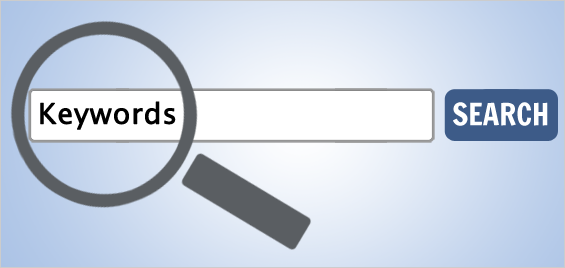
On-Page SEO và cấu trúc trang.
![]() On-Page SEO rất quan trọng trong việc giúp các công cụ tìm kiếm hiểu được nội dung của trang web. Bước đầu tiên là đảm bảo các công cụ tìm kiếm có thể quét qua toàn bộ trang web và tìm thấy tất cả các nội dung có giá trị. Để làm điều này cần đảm bảo trang có các links liên kết nội bộ tốt, không có link bị hỏng, chuyển hướng tốt, nội dung độc đáo và thời gian tải trang phải phù hợp.
On-Page SEO rất quan trọng trong việc giúp các công cụ tìm kiếm hiểu được nội dung của trang web. Bước đầu tiên là đảm bảo các công cụ tìm kiếm có thể quét qua toàn bộ trang web và tìm thấy tất cả các nội dung có giá trị. Để làm điều này cần đảm bảo trang có các links liên kết nội bộ tốt, không có link bị hỏng, chuyển hướng tốt, nội dung độc đáo và thời gian tải trang phải phù hợp.![]() Công việc nghiên cứu từ khóa cũng sẽ có ích vì chúng sẽ giúp tối ưu hóa nội dung. Điều quan trọng là xây dựng các trang có nội dung chỉ tập trung vào 1 chủ để liên quan đến 1 từ khóa duy nhất. Điều đó sẽ giúp công cụ tìm kiếm hiểu biết rõ ràng về nội dung trên trang. Đừng cố gắng “nhồi nhét” nhiều nội dung trên một trang. Việc này sẽ cản trở công cụ tìm kiếm hiểu nội dung trọng yếu của trang web. Nên việc này sẽ có hại nhiều hơn lợi.
Công việc nghiên cứu từ khóa cũng sẽ có ích vì chúng sẽ giúp tối ưu hóa nội dung. Điều quan trọng là xây dựng các trang có nội dung chỉ tập trung vào 1 chủ để liên quan đến 1 từ khóa duy nhất. Điều đó sẽ giúp công cụ tìm kiếm hiểu biết rõ ràng về nội dung trên trang. Đừng cố gắng “nhồi nhét” nhiều nội dung trên một trang. Việc này sẽ cản trở công cụ tìm kiếm hiểu nội dung trọng yếu của trang web. Nên việc này sẽ có hại nhiều hơn lợi.
Ghi nhớ: Đừng nhồi nhét từ khóa sẽ làm nội dung của các trang không được tự nhiên. Tạo trang web và soạn thảo nội dung như bình thường, chèn từ khóa sao cho hợp lý.
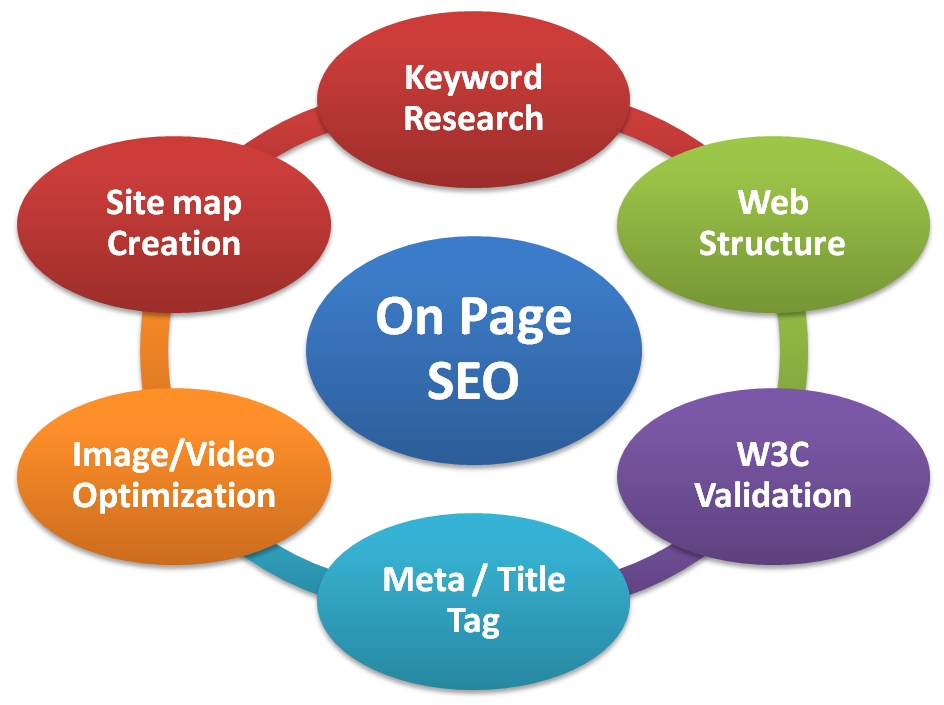
Chuyển đến off-page SEO bao gồm xây dựng liên kết và thực hiện kết nối.
![]() Liên kết là một trong những yếu tố chính để một công cụ tìm kiếm xếp hạng các trang web. Như vậy việc tạo kế hoạch xây dựng các liên kết theo nhiều cách khác nhau để thu hút Inbound link (backlinks – liên kết từ 1 website khác đến website của doanh nghiệp) là rất quan trọng.
Liên kết là một trong những yếu tố chính để một công cụ tìm kiếm xếp hạng các trang web. Như vậy việc tạo kế hoạch xây dựng các liên kết theo nhiều cách khác nhau để thu hút Inbound link (backlinks – liên kết từ 1 website khác đến website của doanh nghiệp) là rất quan trọng.![]() Để xây dựng liên kết, điều tốt nhất là cố gắng thu thập các liên kết một cách tự nhiên. Tạo mối liên kết giữa lĩnh vực mà doanh nghiệp hoạt động với khách hàng mục tiêu là một cách tuyệt vời để cải thiện hình ảnh của thương hiệu cũng như cải thiện off-page SEO. Càng nhiều người biết về doanh nghiệp, càng có nhiều người có khả năng để liên kết đến trang web; do đó cải thiện SEO. Vì Google là một công ty uy tín nên sẽ ưu tiên các trang web có nội dung tốt, đáng tin cậy và kết nối với các trang web có thẩm quyền. Một phương pháp tuyệt vời khác là: tạo nội dung hay, yêu cầu các liên kết từ các hiệp hội liên kết/tổ chức, và tiếp cận với các trang web có cơ quan thẩm quyền trong lĩnh vực hoạt động của doanh nghiệp.
Để xây dựng liên kết, điều tốt nhất là cố gắng thu thập các liên kết một cách tự nhiên. Tạo mối liên kết giữa lĩnh vực mà doanh nghiệp hoạt động với khách hàng mục tiêu là một cách tuyệt vời để cải thiện hình ảnh của thương hiệu cũng như cải thiện off-page SEO. Càng nhiều người biết về doanh nghiệp, càng có nhiều người có khả năng để liên kết đến trang web; do đó cải thiện SEO. Vì Google là một công ty uy tín nên sẽ ưu tiên các trang web có nội dung tốt, đáng tin cậy và kết nối với các trang web có thẩm quyền. Một phương pháp tuyệt vời khác là: tạo nội dung hay, yêu cầu các liên kết từ các hiệp hội liên kết/tổ chức, và tiếp cận với các trang web có cơ quan thẩm quyền trong lĩnh vực hoạt động của doanh nghiệp.
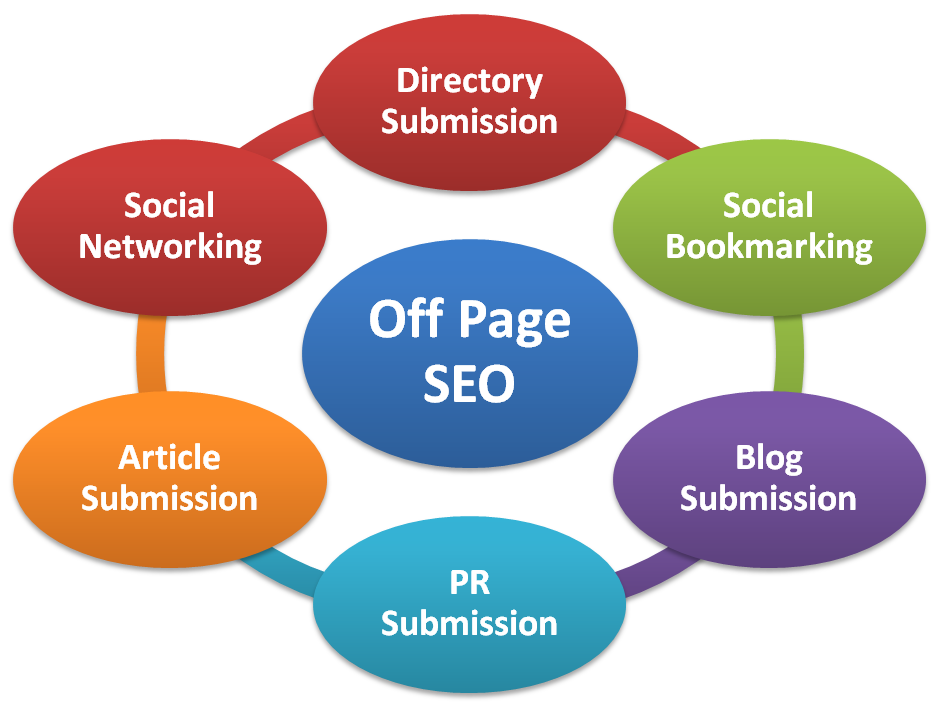
Giám sát, theo dõi dữ liệu và kết quả.
Việc nắm bắt những yếu tố hoạt động hiệu quả hoặc không hiệu quả rất quan trọng. Doanh nghiệp nên có một hệ thống để theo dõi dữ liệu và kết quả càng sớm càng tốt.
![]() Cài đặt Google Analytics để theo dõi lưu lượng hàng ngày, hàng tuần, hàng tháng.
Cài đặt Google Analytics để theo dõi lưu lượng hàng ngày, hàng tuần, hàng tháng.![]() Tạo một bảng tính để theo dõi những thay đổi trên trang đã thực hiện, do đó có thể xem những gì đã thay đổi trên trang sẽ dẫn đến kết quả nhất định.
Tạo một bảng tính để theo dõi những thay đổi trên trang đã thực hiện, do đó có thể xem những gì đã thay đổi trên trang sẽ dẫn đến kết quả nhất định.![]() Sử dụng một dịch vụ theo dõi thứ hạng/phần mềm để theo dõi vị trí tìm kiếm theo thời gian.
Sử dụng một dịch vụ theo dõi thứ hạng/phần mềm để theo dõi vị trí tìm kiếm theo thời gian.
![]()
![]() Cuối cùng, SEO là một quá trình liên tục không ngừng, tuy nhiên nếu biết cách bắt đầu với một chiến lược hợp lý sẽ đạt được thành công trong cuộc chiến Internet hiện nay.
Cuối cùng, SEO là một quá trình liên tục không ngừng, tuy nhiên nếu biết cách bắt đầu với một chiến lược hợp lý sẽ đạt được thành công trong cuộc chiến Internet hiện nay.
Doanh nghiệp có thể tìm hiểu thêm về SEO tại: //globalweb.asia/vi/kien-thuc-website/seo
Để được tư vấn cách thiết lập chiến dịch Google Adwords và thêm các từ khóa phủ định hợp lý cũng như các dịch vụ khác như thiết kế website responsive chuẩn SEO, quản trị website, Google Apps, SEO, Google Adwords, quý doanh nghiệp vui lòng liên hệ với chúng tôi:
Liên hệ
Qúy công ty có thể tham khảo thêm các mẫu website khác tại //globalweb.asia/vi/kho-giao-dien
Để được tư vấn chi tiết, xin vui lòng liên hệ
Công ty Global Links Asia- Tư vấn thiết kế và quản trị website chuẩn SEO
Địa chỉ: 151 Đào Duy Anh, Phú Nhuận, Thành phố Hồ Chí Minh
Hotline: (+84) 938 531 588
Email: This email address is being protected from spambots. You need JavaScript enabled to view it.
5 Tactics to build an Effective SEO Strategy
A sound SEO strategy can lead to years of online success and growth for your business.
Nowadays, most people know what SEO (search engine optimization) is and the role it plays in helping make a business successful. However, one of the more overwhelming and time consuming aspects of SEO is developing a sound strategy. To aid in your quest, the following are 5 easy steps to help develop an effective SEO strategy:
Know your target audience and their online patterns. Set objectives.
Obviously the purpose of SEO is about ranking well in the search engines to drive traffic to your website, but even that won't mean much if your website is showing up in front of an audience that doesn't care. The first thing you should always do is identify your target audience and learn all you can about them--demographics, search patters and preferences, geographic location, etc. A good way to do this is by diving into your Google Analytics account.
Once you have defined your audience, you will want to set objectives based on that audience. What is it that you want your audience to do on your website? What is the best way to get there based on your audience's information? Without a clear set of objectives, you could be performing a great deal of work without getting your desired results.

Categorize your keyword research.
Based on your analysis of the type of audience you are wanting to target, you then need to perform keyword research. Deciding what keywords you should or shouldn't target can make or break your strategy. Create an excel sheet that breaks up your keyword categories based off of your target audience personas, how your website might be sectioned, or even a mixture of both (persona groups with keyword subsections for each). Once you have an excel sheet created, you can start using the Google Keyword Planner to research keywords and plug them into your excel sheet accordingly. You will want to record keywords and search volume on your excel sheet. I highly recommend checking out this article from Moz for a more detailed description of categorizing keywords.

On-Page SEO and Site Structure
On-Page SEO is vital in helping the search engines understand what your website is about. The first step is making sure the search engines can crawl your website and find all of your valuable content. To do this you need to ensure your site has good internal linking with no broken links, good navigation, unique content, and appropriate page load-times.
Your keyword research will also come in handy here because they will help you optimize your content. It is important to build specific pages around keyword focused themes because it provides the search engines a clear understanding of what each page is about. Trying to fit too many themes on a page will do more harm than good.
Remember: You don't want to stuff keywords or make them unnatural on your pages. Create your website and write your content as you normally would, just keep your keywords in the back of your mind.

Move on to off-page SEO including link building and making connections.
Links are one of the primary factors in how a search engine ranks websites. Thus crafting a link building plan around all the different tactics you can do to attract inbound links to your site is very important.
As for link building, the best thing you can do is try to earn links naturally. Making connections in your industry and with your target audience is a great way to improve your brand's image as well as improve off-page SEO. The more people that know about you, the more people are likely to link back to your website; thus improving your SEO. Google has actually started rewarding sites for their popularity and connections with authoritative sites. Other great methods would be: creating great content, requesting links from affiliated associations/organizations, and outreach to websites that are an authority in your industry.

Monitor and track your data and results.
Knowing what is working and what isn't is extremely important. The sooner you can get a system in place to track your data and results, the better.
• Setup a Google Analytics account to monitor organic traffic on a daily, weekly, monthly basis.
• Create a spreadsheet to track the on-page changes you make to your site so you can see what changes led to certain results.
• Utilize a rank tracking service/software to monitor search positions over time.
![]()
![]() In the end, SEO is an ongoing process, however starting with a sound strategy will translate into online success for many years to come.
In the end, SEO is an ongoing process, however starting with a sound strategy will translate into online success for many years to come.
If you would like to build SEO friendly websites with world class standards and most updated technologies- Fully Responsive- as well as enjoy one-stop service offered for you websites, please do not hesitate to contact us for more information and professional advice.
Besides, you may refer to our other services: website management and development, SEO-Google Adwords consulting, CRM Application to Business, Google Apps, Email marketing-Newsletter campaign, Domain and Hosting Registration.
We are truly your website master!
CONTACT US
Viet Nam office: 151 Dao Duy Anh Street, Phu Nhuan District, Ho Chi Minh City
Singapore office: 316 Tanglin Road, Block 316, Singapore
Hot line: (+84) 0938.53.15.88/ (+65) 83551210
Email: This email address is being protected from spambots. You need JavaScript enabled to view it.
Website: exporthelp.vn/en
How to Set Up an Google AdWords Account
![]() Before you get started though there are a few questions you should ask yourself to make sure you are ready to create your own AdWords account:
Before you get started though there are a few questions you should ask yourself to make sure you are ready to create your own AdWords account:
![]() Do I have a website in place and is it appealing to users? AdWords ads do a great job of getting people to your site, but that’s as far as the ads can take them. In order to keep people on your site and get them to convert you have to have a website that is visually appealing and allows the searcher to easily find the information they are looking for. Make sure you have a good, quality website before setting up any PPC (Pay Per Click) account.
Do I have a website in place and is it appealing to users? AdWords ads do a great job of getting people to your site, but that’s as far as the ads can take them. In order to keep people on your site and get them to convert you have to have a website that is visually appealing and allows the searcher to easily find the information they are looking for. Make sure you have a good, quality website before setting up any PPC (Pay Per Click) account.
![]() Do I have a PPC Strategy in place? Before you even begin to set up an AdWords account you want to make sure you have a strategy and defined goals. Check out How to develop your own PPC strategy.
Do I have a PPC Strategy in place? Before you even begin to set up an AdWords account you want to make sure you have a strategy and defined goals. Check out How to develop your own PPC strategy.
![]() Am I willing to commit to PPC advertising? We have seen clients have success on AdWords with budgets as little as $500 per month to over $100,000 per month. No matter what the amount of your budget, you have to be committed to making PPC an integral part of your marketing strategy in order for it to be a success. We suggest letting your account run for 3 months to begin truly seeing its potential.
Am I willing to commit to PPC advertising? We have seen clients have success on AdWords with budgets as little as $500 per month to over $100,000 per month. No matter what the amount of your budget, you have to be committed to making PPC an integral part of your marketing strategy in order for it to be a success. We suggest letting your account run for 3 months to begin truly seeing its potential.
If you’ve been able to answer yes to the three questions above, then you are ready to create your first AdWords account!
![]() 3 Steps to Set Up a New AdWords Account:
3 Steps to Set Up a New AdWords Account:
OK, for you brave souls who have done your research and are ready to get started, here’s how you can the ball rolling:
![]() Step 1: Create Google Account:
Step 1: Create Google Account:
Head to www.adwords.google.com to set up an account. When creating an account, you have the option to create it under your existing Gmail account or set up a new account. Personally, I like to set up a new Gmail account ahead of time, which I use specifically for AdWords management. This way, my personal email isn’t bombarded with emails from AdWords.

![]() Step 2: Set time zone and currency:
Step 2: Set time zone and currency:
Now that your account has been established, you must complete a few housekeeping items, such as setting your time zone and currency preferences:

![]() Step 3: Verify account:
Step 3: Verify account:
Finally, you are prompted to set up billing information. With AdWords, you have two payment options. Automatic payments allow you to pay after accruing clicks. You will be charged upon reaching your billing threshold or 30 days after your last payment, whichever comes first. If you opt for manual payments, you will prepay AdWords and charges will be deducted from the prepaid amount. When your prepaid balance is diminished, all advertising will be suspended until you make another payment.
You can elect to have payments drafted from either a credit card or a bank account. Keep in mind that Google must verify the bank account, which can take a little while. If you are eager to get your ads up and running, your credit card may be a better option.

![]() Step 4: Tracking your performance:
Step 4: Tracking your performance:
The final step to setting up your AdWords is to place your conversion tracking codes. Conversion tracking is when a cookie is placed on the user’s computer and a correct match is made, then Google credits your account with a successful conversion. A conversion is designated as a purchase, sign-up, page view or lead. To view your successful conversions in AdWords, click your Campaigns tab or click on the Reporting and Tools tab and select “Conversions.”
Here are the steps to generating and placing your conversion code snippet:
Click on the Reporting and Tools tab > Conversions
The code is provided at the bottom of the screen. There are no system requirements for this code to be placed on your site. In order for Google to track these conversions properly, the searchers must be able to download images as well as have cookies enabled on their computers.

Now you can copy and paste the conversion code into the associated conversion pages of your web site. The code snippet should be placed between the <body> tags and NOT in the header or the footer of your code.
Congratulations, you are in! You are now an official PPC advertiser and can start building out your account. Now, the journey does not end here… there is so much more you can do with your account. It’s time for optimizations, experiments, mobile campaigns, display network campaigns – the list goes on and PPC Hero is here for you. We will help you through all of it. So, just click your heels and gather that data. Remember, there’s no place like Google…
We wish you the best of luck! ![]()
If you would like to build SEO friendly websites with world class standards and most updated technologies- Fully Responsive- as well as enjoy one-stop service offered for you websites, please do not hesitate to contact us for more information and professional advice.
Besides, you may refer to our other services: website management and development, SEO-Google Adwords consulting, CRM Application to Business, Google Apps, Email marketing-Newsletter campaign, Domain and Hosting Registration.
We are truly your website master!
CONTACT US
Viet Nam office: 151 Dao Duy Anh Street, Phu Nhuan District, Ho Chi Minh City
Singapore office: 316 Tanglin Road, Block 316, Singapore
Hot line: (+84) 0938.53.15.88/ (+65) 83551210
Email: This email address is being protected from spambots. You need JavaScript enabled to view it.
Website: exporthelp.vn/en
Change your website's look by the breakthrough Responsive Web Design technology!
Responsive Web Design (RWD) has become one of the hottest trends in 2013 and popular used by professional website designers around the world. People nowadays seem to talk more about Search Engine Optimization (SEO) friendly website and the increase of web search via mobile devices and tablets rather than via desktops. RWD technology will strongly help your website to improve SEO. ExportHelp via this article, would like to bring Clients 7 main reasons for enhancing Responsive Web Design for your websites.
So, what is Responsive Webs Design (RWD)?
In a simple way of thinking, RWD means that the site adapts to whatever size screen it's being displayed on, no more partial-content mobile versions of sites. In addition, the website will be displayed in readable way; users do not need to zoom in, zoom out, turn left, and turn right to catch the whole content. It focuses on multi-platform usability that has also seen the design approach favorable for SEO.
Why we need to enhance Responsive Web Design for our websites?
1. Google will definitely prefer websites with Responsive technology!
![]() Google has suggested Responsive Design when optimizing a website for smartphones. For that reason, people working in SEO are ready to follow this design approach. Google
Google has suggested Responsive Design when optimizing a website for smartphones. For that reason, people working in SEO are ready to follow this design approach. Google

2. One website, one URL for all devices access
![]() Before Fully Responsive technology turns up, maintaining optimal user experience meant additional website versions were necessary for the content to translate well on mobile devices and tablets.
Before Fully Responsive technology turns up, maintaining optimal user experience meant additional website versions were necessary for the content to translate well on mobile devices and tablets.
![]() Creating a mobile version for an optimized website requires starting a SEO strategy from the beginning. The reason is mobile web version have different URL and HTML code. Therefore, Google will treat their page authority separately.
Creating a mobile version for an optimized website requires starting a SEO strategy from the beginning. The reason is mobile web version have different URL and HTML code. Therefore, Google will treat their page authority separately.
![]() All the authority collected from the original website pages, will not be carried over to the mobile version. This is a disadvantage when considering backlinks and social shares – two important tools in SEO strategy. From now on, no matter what device a website is displayed on, Responsive Design automatically adjusts a page in a way that webmasters can retain their content on the same URL.
All the authority collected from the original website pages, will not be carried over to the mobile version. This is a disadvantage when considering backlinks and social shares – two important tools in SEO strategy. From now on, no matter what device a website is displayed on, Responsive Design automatically adjusts a page in a way that webmasters can retain their content on the same URL.
![]() Consequently, no separate optimization campaigns are needed to optimize for different devices. You can save a large part of time and money!
Consequently, no separate optimization campaigns are needed to optimize for different devices. You can save a large part of time and money!

3. Responsive helps combat high bounce rate and then…we have happy users!
![]() Websites not translating well on different devices is one of the main reasons for users to leave. If a user leaves a website right after arriving, Google may take it as an indication that the content presented in that website is not the most relevant. The aim for Google is to guarantee that its visitors reach the answer of their search query on the first SERP, so a high bounce rate on a website, will ultimately lower its rankings on search engines.
Websites not translating well on different devices is one of the main reasons for users to leave. If a user leaves a website right after arriving, Google may take it as an indication that the content presented in that website is not the most relevant. The aim for Google is to guarantee that its visitors reach the answer of their search query on the first SERP, so a high bounce rate on a website, will ultimately lower its rankings on search engines.
![]() A mobile website can have differing content from its original version, whether it be summarized or excluded altogether. In addition, discrepancy in pixel sizing along with high mobile data costs can make loading time, navigation and viewing problematic, which will also make users leave to find a website that is easier to navigate on their device.
A mobile website can have differing content from its original version, whether it be summarized or excluded altogether. In addition, discrepancy in pixel sizing along with high mobile data costs can make loading time, navigation and viewing problematic, which will also make users leave to find a website that is easier to navigate on their device.
![]() Fully Responsive Design can solve these problems by presenting content in a functional way without compromising what device you choose to display on. The content will become easy to view which ultimately keep users on your page.
Fully Responsive Design can solve these problems by presenting content in a functional way without compromising what device you choose to display on. The content will become easy to view which ultimately keep users on your page.

4. A considerable part of Google searches come from mobile devices
![]() The increasing amount of people searching on Google via mobile is a real trend that people working in SEO need to take into account when planning an optimization strategy if they desire to stay ahead.
The increasing amount of people searching on Google via mobile is a real trend that people working in SEO need to take into account when planning an optimization strategy if they desire to stay ahead.
![]() Thanks to RWD and SEO, users that have positive experience on an optimized mobile website are prone to convert from the potential to the real customers.
Thanks to RWD and SEO, users that have positive experience on an optimized mobile website are prone to convert from the potential to the real customers.

5. Reduces link building
![]() As everything links back to just one URL, both mobile and desktop versions have the same link profile when set in Responsive Design. For SEO purposes, this approach is an advantage against competitors which choosing a separate mobile website and have to create their domain authority from scratch.
As everything links back to just one URL, both mobile and desktop versions have the same link profile when set in Responsive Design. For SEO purposes, this approach is an advantage against competitors which choosing a separate mobile website and have to create their domain authority from scratch.

6. Avoids duplicate content
![]() Having a separate mobile website may bring a repercussion for SEO when both sites present identical content. Because duplicate content considered as a dishonest SEO trick to improve search result and generate traffic for the website, updated Google’s Panda illustrated the search engine seriously tackling the problem of duplicate and poor content.
Having a separate mobile website may bring a repercussion for SEO when both sites present identical content. Because duplicate content considered as a dishonest SEO trick to improve search result and generate traffic for the website, updated Google’s Panda illustrated the search engine seriously tackling the problem of duplicate and poor content.
![]() Thus, it deals a death-blow to many websites by significantly dropping their ranks or even completely kicking them out of search results. As a result, understand why duplicate content today might be a serious matter of concern for SEO.
Thus, it deals a death-blow to many websites by significantly dropping their ranks or even completely kicking them out of search results. As a result, understand why duplicate content today might be a serious matter of concern for SEO.

7. Bring the best user experience ever!
![]() Regardless what option presents you choose to deliver content to users, responsive or a separate website, modern businesses can pay no attention to optimize their website for mobile devices.
Regardless what option presents you choose to deliver content to users, responsive or a separate website, modern businesses can pay no attention to optimize their website for mobile devices.
![]() If you want to stay ahead of the competition, remember to notice mobile user experience when creating an SEO strategy.
If you want to stay ahead of the competition, remember to notice mobile user experience when creating an SEO strategy.
In conclusion, Responsive Web Design can be an effective user experience strategy to attract traffic and get clicks on multiple devices to your websites. The Internet was born for easy information sharing, finding and connecting. Things become easier to search; websites become more flexible, informative and beautiful are not just the regulations Google forces us to do but the insight of Internet users over the world. Once businesses found the customers insight and serve them right, they found their success.

You can check your website's responsive ability by zoom in the screen in PC, laptop or even in mobile devices. If your website is not responsive and well display in all device versions, please do not hesitate to contact ExportHelp for SEO friendly and responsive website design service. We will design a professional and good-looking website which is suitable for your business line.
Moreover, ExportHelp provides other various quality services: Website management, Email Marketing - Email newsletter, SEO - Google Adwords, etc in case Client would like to improve the efficiency and effectiveness of website. We promise the best advice, professional website design & management service to help Client achieve business goals!
CONTACT US
Viet Nam office: 151 Dao Duy Anh Street, Phu Nhuan District, Ho Chi Minh CitySingapore office:316 Tanglin Road, Block 316, Singapore
Hot line: (+84) 0938.53.15.88/ (+65) 83551210
Email: This email address is being protected from spambots. You need JavaScript enabled to view it.
Website: exporthelp.vn/en
SEO Introduction
What is SEO ?

Basic search engine optimization (SEO) is fundamental. And essential. SEO will help you position your website properly to be found at the most critical points in the buying process or when people need your site.
What are search engines looking for? How can you build your website in a way that will please both your visitors/customers, as well as Google, Bing, and other search engines? Most importantly, how can SEO help your web presence become more profitable?

SEO is a marketing discipline focused on growing visibility in organic (non-paid) search engine results. SEO encompasses both the technical and creative elements required to improve rankings, drive traffic, and increase awareness in search engines. There are many aspects to SEO, from the words on your page to the way other sites link to you on the web. Sometimes SEO is simply a matter of making sure your site is structured in a way that search engines understand.
SEO isn't just about building search engine-friendly websites. It's about making your site better for people too. At Moz we believe these principles go hand-in-hand.
This guide is designed to describe all areas of SEO—from finding the terms and phrases (keywords) that generate traffic to your website, to making your site friendly to search engines, to building links and marketing the unique value of your site. If you are confused about this stuff, you are not alone, and we're here to help.
Why does my website need SEO?

The majority of web traffic is driven by the major commercial search engines, Google, Bing, and Yahoo!. Although social media and other types of traffic can generate visits to your website, search engines are the primary method of navigation for most Internet users. This is true whether your site provides content, services, products, information, or just about anything else.
Search engines are unique in that they provide targeted traffic—people looking for what you offer. Search engines are the roadways that make this happen. If search engines cannot find your site, or add your content to their databases, you miss out on incredible opportunities to drive traffic to your site.
Search queries—the words that users type into the search box—carry extraordinary value. Experience has shown that search engine traffic can make (or break) an organization's success. Targeted traffic to a website can provide publicity, revenue, and exposure like no other channel of marketing. Investing in SEO can have an exceptional rate of return compared to other types of marketing and promotion.
Why can't the search engines figure out my site without SEO

Search engines are smart, but they still need help. The major engines are always working to improve their technology to crawl the web more deeply and return better results to users. However, there is a limit to how search engines can operate. Whereas the right SEO can net you thousands of visitors and increased attention, the wrong moves can hide or bury your site deep in the search results where visibility is minimal.
In addition to making content available to search engines, SEO also helps boost rankings so that content will be placed where searchers will more readily find it. The Internet is becoming increasingly competitive, and those companies who perform SEO will have a decided advantage in visitors and customers.
Can I do SEO for myself?

The world of SEO is complex, but most people can easily understand the basics. Even a small amount of knowledge can make a big difference. Free SEO education is widely available on the web, including in guides like this. Combine this with a little practice and you are well on your way to becoming a guru.
Depending on your time commitment, your willingness to learn, and the complexity of your website(s), you may decide you need an expert to handle things for you. Firms that practice SEO can vary; some have a highly specialized focus, while others take a broader and more general approach.
In any case, it's good to have a firm grasp of the core concepts.
If you would like to build SEO friendly websites with world class standards and most updated technologies- Fully Responsive- as well as enjoy one-stop service offered for you websites, please do not hesitate to contact us for more information and professional advice.
Besides, you may refer to our other services: website management and development, SEO-Google Adwords consulting, CRM Application to Business, Google Apps, Email marketing-Newsletter campaign, Domain and Hosting Registration.
We are truly your website master!
CONTACT US
Viet Nam office: 151 Dao Duy Anh Street, Phu Nhuan District, Ho Chi Minh City
Singapore office: 316 Tanglin Road, Block 316, Singapore
Hot line: (+84) 0938.53.15.88/ (+65) 83551210
Email: This email address is being protected from spambots. You need JavaScript enabled to view it.
Website: exporthelp.vn/en
40 Essential SEO Terms You Should Know

This is a list of the 40 most essential search engine optimization (SEO) terms to help marketers communicate with developers and understand how to optimize their websites.
![]() 0-9
0-9
301 Redirect – A way to make one web page redirect the visitor to another page. Whenever you change the web address of a page, apply a 301 redirect to make the old address point to the new one. This ensures that people who have linked to or book marked the old address will automatically get to the new one, and search engines can update their index.
 A
A
ALT Text/Tag or Attribute - A description of an image in your site's HTML. Unlike humans, search engines read only the ALT text of images, not the images themselves. Add ALT text to images whenever possible.
Anchor Text - The actual text of a link to a web page. On most websites, this text is usually dark blue and underlined, or purple if you’ve visited the link in the past. Anchor text helps search engines understand what the destination page is about; it describes what you will see if you click through.
 B
B
Blog - A part of your website where you should regularly publish content (e.g. commentary on industry/company topics, descriptions of events, photos, videos, etc.). Each blog post on your website is a new page that a search engine sees, and therefore a new opportunity to get found online. Make sure you keep your blog within your own domain.
Bookmark - A link to a website saved for later reference in your web browser or computer. Social bookmarking sites (example: Delicious.com) let users share websites they like with each other. Having links to your site in social bookmarking sites is a sign to crawlers that your website content is interesting to people.
 C
C
Canonical URL - The canonical URL is the best address on which a user can find a piece of information. Sometimes you might have a situation where the same page content can be accessed at more than one address. Specifying the canonical URL helps search engines understand which address for a piece of content is the best one.
Conversion Form - A form through which you collect information about your site visitor. Conversion forms convert traffic into leads. Collecting contact information helps you follow up with these leads.
CSS (Cascading Style Sheets) - The part of your code that defines how different elements of your site look (examples: headers, links).
 D
D
Directory - Just like directories for people and phone numbers, there are directories for websites. Submitting your site to a directory gives you more than just an inbound link; it helps people find you. The most popular web directories are Yahoo! Directory and Dmoz.
Domain - The main web address of your site (example: www.yoursite.com). It's good to renew ownership of your domain for several years. Search engine rankings favor websites with longer registrations because it shows commitment.

 F
F
The Fold - The “fold” is the point on your website where the page gets cut off by the bottom of a user’s monitor or browser window. Anything below the fold can be scrolled to, but isn’t seen right away. Search engines place some priority on content above the fold, since it will be seen right away by new visitors. Having too many ads above the fold can be seen as a negative issue, too. (See Panda).
 H
H
Headings - Text on your website that is placed inside of a heading tag, such as an H1 or H2. This text is often presented in a larger and stronger font than other text on the page.
HTML - The code part of your website that search engines read. Keep your HTML as clean as possible so that search engines read your site easily and often. Put as much layout-related code as possible in your CSS instead of your HTML.
 I
I
Inbound Link - A link from one site into another. A link from another site will improve your SEO, especially if that site has a high PageRank.
Internal Link - A link from one page to another on the same website, such as from your homepage to your products page.
Indexed Pages - The pages of your website that are stored by search engines.
 J
J
Javascript - A scripting language that allows website administrators to apply various effects or changes to the content of their website as users browse it. Search engines often have difficulty reading content that is inside of Javascript, but they are getting better at it over time.
 K
K
Keyword - A word that a user enters in search. Each web page should be optimized with the goal of drawing in visitors who have searched specific keywords.
 L
L
Link Building - The activity and process of getting more inbound links to your website for improved search engine rankings.
Long Tail Keyword - An uncommon or infrequently searched keyword, typically with two or more words in the phrase. Small businesses should consider targeting long tail keywords, as they are lower difficulty and often have more qualified searchers. Common keywords such as 'software' are more competitive, and very hard to rank high for them in search.
 M
M
Metadata - Data that tells search engines what your website is about.
Meta Description - A brief description of fewer than 160 characters of the contents of a page and why someone would want to visit it. This is often displayed on search engine results pages below the page title as a sample of the content on the page.
Meta Keywords - Previously used by search engines in the 90s and early 00s to help determine what a web page was about, the meta keywords tag is no longer used by any major search engines.
MozRank - A logarithmic ranking provided by SEOmoz from 0-10.0 of the number and quality of inbound links pointing to a certain website or page on that website. A 10.0 is the best linked-to page on the internet, and a 0 has no recognized inbound links.
 N
N
Nofollow - When a link from one site does not pass SEO credit to another. Do not use nofollow when linking to internal pages in your website. Use it when linking to external pages that you don't want to endorse.
 P
P
Page Title - The name you give your web page, which is seen at the top your browser window. Page titles should contain keywords related to your business. Words at the beginning of your page title are more highly weighted than words at the end.
PageRank - A number from 0-10, assigned by Google, indicating how good your overall SEO is. It is technically known as 'Toolbar PageRank.' Note: PageRank relevancy is changing.
Panda - Refers to a series of updates released by Google to its search engine ranking algorithm that are intended to discourage people who create large amounts of mediocre content in an attempt to claim many keyword rankings without generating much value for users. Read a marketer's guide to understanding Google Panda here.
PPC (Pay-Per-Click) - Advertising method in which an advertiser puts an ad in an online advertising venue and pays that venue each time a visitor clicks on his/her ad. Google AdWords is the classic example of this.
 R
R
Ranking Factor - One element of how a search engine determines where to rank a certain page, such as the number of inbound links to a page or the contents of the title tag on that page.
Referrer String - A piece of information sent by a user’s browser when they navigate from page to page on the web. It includes information on where they came from previously, which helps webmasters understand how users are finding their website.
RSS Feed - RSS stands for 'really simple syndication.' It is a subscription-based way to get updates on new content from a web source. Set up an RSS feed for your website or blog to help your followers stay updated when you release new content.
 S
S
SERP (Search Engine Ranking Page) - The page that you are sent to after you run a query in a search engine. It typically has 10 results on it, but this may vary depending on the query and search engine in question.
Sitemap - A special document created by a webmaster or a piece of software that provides a map of all the pages on a website to make it easier for a search engine to index that website.
Social Media - Online media created by and shared among individuals. Facebook, YouTube, LinkedIn, Google+, and Twitter are popular social media websites. Links from many social media sites now appear in searches. It's important to have links to your site spread throughout social media.
Spider - A computer program that browses the internet and collects information about websites.
 T
T
Traffic - The visitors to your site.
Title - The title of a page on your website, which is enclosed in a <title> HTML tag, inside of the head section of the page. It appears in search engine results and at the top of a user’s web browser when they are on that page.
Traffic Rank - The ranking of how much traffic your site gets compared to all other sites on the internet. You can check your traffic rank on Alexa.
 U
U
URL - The web address of a page on your site (example: www.yoursite.com/contact).
If you would like to build SEO friendly websites with world class standards and most updated technologies- Fully Responsive- as well as enjoy one-stop service offered for you websites, please do not hesitate to contact us for more information and professional advice.
Besides, you may refer to our other services: website management and development, SEO-Google Adwords consulting, CRM Application to Business, Google Apps, Email marketing-Newsletter campaign, Domain and Hosting Registration.
We are truly your website master!
CONTACT US
Viet Nam office: 151 Dao Duy Anh Street, Phu Nhuan District, Ho Chi Minh City
Singapore office: 316 Tanglin Road, Block 316, Singapore
Hot line: (+84) 0938.53.15.88/ (+65) 83551210
Email: This email address is being protected from spambots. You need JavaScript enabled to view it.
Website: exporthelp.vn/en
What Is Black Hat SEO?
Introduction
Black hat SEO refers to a set of practices that are used to increases a site or page's rank in search engines through means that violate the search engines' terms of service. The term "black hat" originated in Western movies to distinguish the "bad guys" from the "good guys," who wore white hats. Recently, it's used more commonly to describe computer hackers, virus creators, and those who perform unethical actions with computers.
It's crucial to realize that implementing Black Hat SEO tactics and strategies can get your site banned from search engines, excluding you from the number one traffic referral source on the Internet. All SEOs need a proper understanding of Black Hat SEO and its consequences.
What is Black Hat SEO?
Black Hat SEO is most commonly defined as a disapproved practice that nevertheless could increase a page's ranking in a search engine result page (SERP). These practices are against the search engine's terms of service and can result in the site being banned from the search engine and affiliate sites. A list of tactics and strategies employed by black hat SEO practitioners have been openly denounced on Google's Webmaster Guidelines and Bing's Webmaster Guidelines.
"Is the work that I'm doing adding value to the user or am I just doing this for search engines to see?" is a litmus test on whether an SEO tactic would go against a search engine's webmaster guideline. If no value is added to the user, but rankings are likely to increase, then your decisions are highly likely to be black hat. The same test can be applied to to paid search practices to determine whether an activity is considered black hat ppc.
Recorgnize Black Hat SEO tactics
The following SEO tactics are considered black hat and should not be exercised at all if you want to stay above board with Google and other search engines:
- Content Automation
- Doorway Pages
- Hidden Text or Links
- Keyword Stuffing
- Reporting a Competitor (or Negative SEO)
- Sneaky Redirects
- Cloaking
- Link Schemes
- Guest Posting Networks
- Link Manipulation (including buying links)
- Article Spinning
- Link Farms, Link Wheels or Link Networks
- Rich Snippet Markup Spam
- Automated Queries to Google
- Creating pages, subdomains, or domains with duplicate content.
- Pages with malicious behavior, such as phishing, viruses, trojans, and other malware
How to report Black Hat SEO?
There are two reason why you may report black hat SEO. Either your website has been attacked through a malicious hack, virus or negative SEO campaign of spammy links, or you see spammy web results on a competitive keyword your website is ranking on. For the latter, you may file a webspam report through Google Webmaster Tools. Please use this tool with discretion. SPAM does not stand for search positions above mine! Falsely reporting web spam could be considered black hat SEO.
In the event that your website has been attacked through a malicious hack, virus, or malware, request for a malware review after you've removed the malicious code.
In the event that your website is the target of a negative SEO campaign of spammy links, use the Disavow Links Tool in Google Webmaster Tools after you've tried to contact webmasters whom are pointing these links to your website to have them removed.
If you would like to build SEO friendly websites with world class standards and most updated technologies- Fully Responsive- as well as enjoy one-stop service offered for you websites, please do not hesitate to contact us for more information and professional advice.
Besides, you may refer to our other services: website management and development, SEO-Google Adwords consulting, CRM Application to Business, Google Apps, Email marketing-Newsletter campaign, Domain and Hosting Registration.
We are truly your website master!
CONTACT US
Viet Nam office: 151 Dao Duy Anh Street, Phu Nhuan District, Ho Chi Minh City
Singapore office: 316 Tanglin Road, Block 316, Singapore
Hot line: (+84) 0938.53.15.88/ (+65) 83551210
Email: This email address is being protected from spambots. You need JavaScript enabled to view it.
Website: exporthelp.vn/en
Black Hat SEO vs. White Hat SEO
Comparison char

The difference between black hat and white hat SEO relates to the specific techniques used when trying to improve the search engine ranking of a website or web page.
Search engine optimization or SEO is the process by which volume and quality of traffic to a web site can be improved. The higher ranked a site is higher on the search engine results pages (SERP), the more visitors the website naturally gets. Owing to the rising importance of search engines like Google, SEO is a much sought-after internet marketing strategy. Search engines determine their rankings through propreitary algorithms that are secret and closely guarded. However, these algorithms are based on certain well-known principles. Search engine optimization seeks to apply these principles to improve search ranking. The difference between black hat and white hat SEO relates to what techniques are used when applying these principles.
Features and Techniques Used
Black hat SEO refers to attempts to improve rankings in ways that are not approved by search engines and involve deception. They go against current search engine guidelines. White hat SEO refers to use of good practice methods to achieve high search engine rankings. They comply with search engine guidelines.
Effectiveness of BH vs WH
SEO is part science, part art. There is a wide range of opinion in the SEO practitioner community regarding the effectiveness of white hat vs black hat techniques. Most agree that white hat techniques take longer to improve search rankings.
Consequences of BH vs WH
Even though quick results make black hat SEO tempting, it can get your site banned (de-indexed) or heavily penalized for use of unethical practices. It is widely believed that the risk is not worthwhile for websites that plan to be operational over the long haul. Moreover black hat SEO methods give only short term results. White hat SEO can get your site ranked higher by use of ethical techniques, good content, appropriate keywords and a combination of smart marketing angles providing long lasting results.
Panda
Google's Panda update rewards websites that have high-quality content. After this algorithm update, low-quality pages on the site affected not just the ranking for those pages but for the entire website.
Penguin
Google's Penguin update was targeted specifically at black hat SEO techniques using which some website owners had accumulated thousands of links from "link farms". Thousands of such websites were penalized due to the Penguin update. Webmasters were encouraged to remove bad links pointing to their site. In some cases, they were able to do so successfully but often webmasters cannot control who links to them.
If you would like to build SEO friendly websites with world class standards and most updated technologies- Fully Responsive- as well as enjoy one-stop service offered for you websites, please do not hesitate to contact us for more information and professional advice.
Besides, you may refer to our other services: website management and development, SEO-Google Adwords consulting, CRM Application to Business, Google Apps, Email marketing-Newsletter campaign, Domain and Hosting Registration.
We are truly your website master!
CONTACT US
Viet Nam office: 151 Dao Duy Anh Street, Phu Nhuan District, Ho Chi Minh City
Singapore office: 316 Tanglin Road, Block 316, Singapore
Hot line: (+84) 0938.53.15.88/ (+65) 83551210
Email: This email address is being protected from spambots. You need JavaScript enabled to view it.
Website: exporthelp.vn/en











